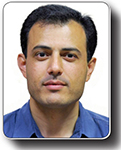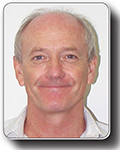A True Triaxial Stress Cell to simulate deep downhole drilling conditions
Vamegh Rasouli A and Brian Evans ACurtin University of Technology
The APPEA Journal 50(1) 61-70 https://doi.org/10.1071/AJ09005
Published: 2010
Abstract
Conventional rock mechanics experiments using triaxial cells trying to simulate the true downhole stress field by applying equal horizontal stresses, fundamentally fail to treat real field borehole conditions as three independent stresses. In the real world, the horizontal stress field at shallow depth can have a different direction from that at greater depths, resulting in well failure if the driller is not careful. Core samples used in small cells applying uniaxial stress simply cannot be used to properly simulate these anomalous downhole stress fields.
A True Triaxial Stress Cell (TTSC) has been built to overcome this problem by properly simulating the true earth stresses. This technology will mimic stresses in deep oil and gas fields existing in highly anisotropically stressed environments. The TTSC allows vertical and two independent horizontal stresses to be applied up to 50 MPa in each direction on a 30 cm cube of rock and, at the same time, allows pore pressure to be applied up to 21 MPa. Through a hole drilled through the centre of the rock, a fluid can be injected to simulate hydraulic fracturing, or CO2 injection into saline aquifers or coal. Sanding analysis can be performed by increasing pore pressure and producing pore fluid from the borehole. Formations having different geological properties may be simulated, while deviated drilling through the rock simulates the deviated stresses when drilling horizontal wells. Fracture propagation, sanding initiation, and in-flow production performance is monitored in real-time using ultrasonic seismic transducers mounted around the sample.

Vamegh Rasouli is a Chartered Professional Engineer (CPEng) and is a registered engineer with the National Professional Engineers Register (NPER) of Australia. After completing his PhD in 2002 from Imperial College, London, Vamegh took up the position of assistant professor in the Department of Petroleum Engineering at Amirkabir University of Technology (Iran). In 2006 Vamegh joined the Department of Petroleum Engineering at Curtin University as a senior lecturer to add support to the delivery of the Department’s Master of Petroleum Well Engineering degree, and to carry out research in his specialist area of wellbore stability, sanding, hydraulic fracturing, etc. He established the Curtin Petroleum Geomechanics Group (CPGG), and he supervises five PhD students and number of Masters students. CPGG has completed a number of successful research and consulting projects. Vamegh is also a consulting engineer on various geomechanics related projects with Schlumberger’s Data and Consulting Services (DCS) in Perth. v.rasouli@curtin.edu.au |

Brian Evans is a professor and the head of the Department of Petroleum Engineering at Curtin University, and director of the Curtin Centre for Rock Characterisation. After graduating as an electrical engineering from Liverpool JM University, he worked as a design engineer with GEC Automation, and then turned to mud logging with Geoservice. Subsequently he worked as an instrument engineer with GSI, travelling around the world for a number of years until joining Southern Geophysical Consultants of London as a consultant geophysicist. In 1976 he established Perth’s only geophysical consultancy at that time, with four consultants working until 1983 when the oil price collapsed. He then obtained a Masters in Geophysics at WAIT and a PhD at Curtin University. He established the Department of Exploration Geophysics and Australia’s first research consortium (CRGC) in 1992. He joined the Department of Petroleum Engineering in 2008 to assist its strong expansion. He is the SEG book Seismic Acquisition in Exploration. Member: ASEG, SPE and SEG. b.evans@curtin.edu.au |


